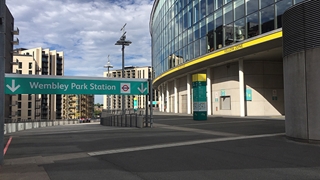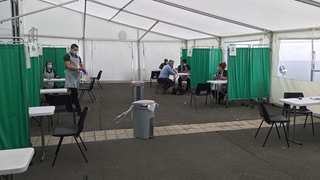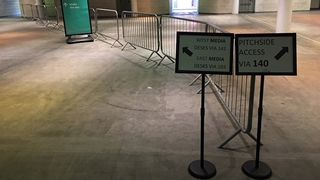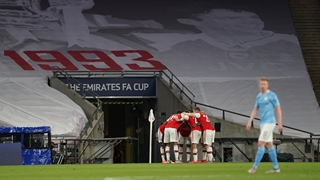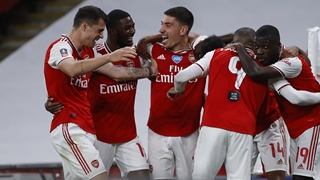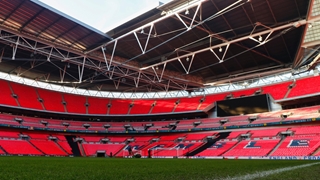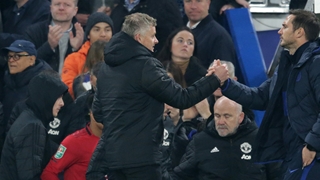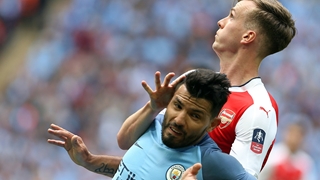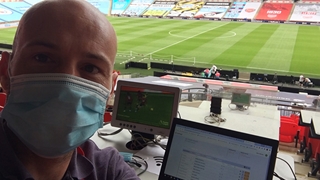
Monday 16 March was the last time I left Wembley, as all FA and Stadium staff were instructed to work from home.
That was just less than a week before the country went into full lockdown due to the COVID-19 pandemic and how things have changed for everyone.
Here we are in mid-July for the first of our Emirates FA Cup semi-finals, around a month after the competition would normally be done and dusted, with far less people within the whole stadium than there would be for a standard working day at the venue, let alone one of the biggest days of the season at Wembley.
Of course, we’re all thankful for the return of football and that this game was even being staged following what has been an unprecedented few months for everyone in modern times, is something to be grateful for.
This was my first game back since the return, and I left home not really sure what to expect or to feel once I was here. I’d always turned the crowd noises off on the televised games so far, so the lack of atmosphere was something I was prepared for.
But it was more than that. Approaching Wembley was already something different, with my usual route in by Underground and the stroll up Wembley Way replaced by a smooth drive through the capital and then parking up alongside shoppers for the outlet and restaurants next door.
There was none of the darting between fans on a march towards the Arch with the smell of food trucks, music, chants, buzz, excitement and anticipation from the masses which have all become a favourite part of FA Cup games here.
Instead, it was a slalom through a medical screening centre, constructed on the walkway around the stadium which would normally be packed with Arsenal and City fans with a few hours to go until kick-off.
I was called to one of eight separate areas where my temperature and heart rate were measured, all contactless naturally, a face mask was provided and then a socially-distanced accreditation collection and turnstile entry before it was through a deserted concourse to my seat in the press box.
Normally there would be around 200 journalists here for a semi-final tie like this, with 80 photographers and around 400 staff and crew from the broadcasters dotted around Wembley.
Today, it was just 25 journalists, 12 snappers and 91 camera and production crew from BT Sport, who were providing the live coverage.
But the biggest miss is undoubtedly the 80,000 supporters who’d be here in the stands, hoping to urge their team into the Heads Up FA Cup Final, which takes place in just two weeks. For that reason, it feels a privilege to have been able to watch live.
Both Arsenal and City had provided some impressive branding to cover the seats where their fans would normally be, with the Londoners celebrating their joint-record number of FA Cup successes across 13 blocks and City displaying iconic images and phrases unique to their own fans.
During the game, the now familiar shouts from the players on the pitch and staff on the sidelines took over, and it was almost unique to hear the cheers from the Arsenal block of staff and subs when Pierre-Emerick Aubameyang put them in front and duly added a second to seal their win.
Perhaps the most noticeable aspect for me came at the final whistle though, a time when the players and supporters usually get a chance to celebrate the achievement of reaching an FA Cup Final together.
Tonight, it was just a case of the players, from both teams, congratulating each other before heading off the pitch. And why not? There was no applause, no cheering, no music, no fans to share the moment with. That will come back, and it’s something that everyone will be looking forward to.
But with remaining Premier League games still to conclude, and the Heads Up FA Cup Final to contest in two weeks, for now it’s perhaps all a part of the current normal.


